By OGP Editors / Zhong Lingqiang Provides File Photos
Oh Good Party
As collectors, different people have different purposes. Some are for profits, while some are for their belief or faith. We have been looking for some spirit, a spirit of collectible faith and attitude, a responsibility to our traditional art and to our society. It is not a matter of luck or fortune, but a test of the person’s nature.
Background
Zhong Lingqiang, born in 1949 at Nanjing, and moved to Shanghai with his parents at 8-year-olds. He was the general secretary of Shanghai Viewing Stone Association for several consecutive terms, and now is a senior adviser of Shanghai Viewing Stone Association, art consultant of China Accounting Museum, and Haipai(1*) viewing stone collector.
Mr. Zhong has been in love with stones and collecting them for more than 30 years. He has edited and published many well-known and popular publications, such as ‘Chinese Modern Stone Collector Code’ and ‘100 pieces of Chinese Viewing Stone Masterpieces in Different Generations‘. His achievements of collecting, appreciating and developing viewing stones have been documented in record books such as ‘Chinese Specialist Bibliography’. His collectibles have been displayed on various exhibitions and also recorded in books, such as ‘Chinese Miracle Stones’, ‘Folk Art Collectible’ and ‘Chinese Rain-Flower Pebbles’. It has been reported in a special column titled ‘Miracle Stone at My Home’ in the magazine ‘Nature and Human’.
Other than that, Mr. Zhong was also involved in developing and organizing diverse exhibitions of viewing stones, such as ‘Chinese Viewing Stone Exhibition’ in 1991, ‘The First Exhibition of Chinese Stone Collectibles of Famous Celebrities’ in 1993, ‘Shanghai Oriental Viewing Stone Expo’ in 1994, ‘ The First Shenzhen Oriental Viewing Stone Expo’, ‘Wang Yongkui's Antarctic Stone Show’ in 1996, ‘Hello, My Hong Kong - Shenzhen Oriental Viewing Stone and Jewelry Expo’ in 1997, ‘Shanghai Viewing Stone Exhibition’ in 1998, ‘Oriental Viewing Stone Expo’ in 1999, ‘New Century Chinese Viewing Stone Exhibition’ in 2001, ‘Stone Art, Stone Spirit - Oriental Viewing Stone Expo’ in 2002, ‘Stone’s Charm: Chinese Viewing Stone Art and Painting Joint Exhibition’ in 2004, ‘Stone Soul - Chinese Famous Carving Stone Art Exhibition’ in 2006, ‘Joint Exhibition for Earth Spirit -River and Ocean Pebble’ in 2008, ‘The Third Shanghai Wan Chun Yuan Oriental Viewing Stone Expo’ and ‘China Viewing Stone Market Theory Seminar’ in 2010, ‘Hangzhou Oujin Viewing Stone and Jade City - Culture Spring Festival’, ‘Hangzhou Oujin Viewing Stone and Jade City Spring Fair’, ’Viewing Stone and Painting - Shanghai Graphic Stone Invitation Exhibition’ in 2011, ‘The Fun of the Stone - Shanghai Stone Collectors’ Graphic Stone, Painting and Calligraphy Exhibition’ in 2014, ‘The Second Shanghai Stone Collectors’s Graphic Stone Painting and Photography Joint Exhibition’ in 2015, etc.
Interview
OGP:As a Chinese republican politician in US, Ms. Anna Chan Chennault(2*) wrote ‘Advocating oriental stone art, Enlighten Chinese culture’ for you in 1994 and also accepted your invitation as the nominal president of ‘Oriental Viewing Stone Expo’. One month ago, we also read your new publication ‘The Essence of Stone Collection - DING RongQuan/HUANG GuoZhen Series’, which included hundreds of collectible viewing stones from Ding Rongquan and Huang Guozhen couple and some appreciation articles. Actually, some of our OGP members have visited your home museum ‘Haipai Viewing Stone House’ and have seen what was reported in ‘Miracle Stones at Home’ years ago and were impressed very much. Time passes so quickly and so far you have been dealing with stones for more than 30 years. As a senior collector of viewing stones, what made you fall in love with such kind of natural treasure?
Mr. Zhong:Well, before we start, I’d like to make something clear. Viewing stones are defined as ‘art pieces of stone that are naturally shaped, and of collectable, appreciable, economic and scientific values’ by the ‘Viewing Stone Identification and Assessment’. Viewing stones are divided into 5 categories: shape stones, graphic stones, mineral crystals, fossil stones and peculiar stones. Regarding to my collecting experience, I have to start with the city of Nanjing where I was born. Nanjing has been the capital of more than 6 dynasties in China and therefore has a long history of 2400 years. In my childhood, I loved drawing, then one day I was impressed by the colorful stones in water in an art and craft store. Even after I moved to Shanghai, another city, with my parents when I was 8-years-old, my affections to rain-flower pebbles still remained in my mind and accompanied with my growth. One day, I surprisingly noticed that there were booths selling rain-flower pebbles near my office. That was where I started collecting them. Those gifted treasures interested me by their texture and colors and made me one of the collectors of viewing stones.
Zhong Lingqiang
Appreciation of viewing stones lies in the sceneries and rhythm they imply. In my earlier years, I wrote it down as ‘stones are cold, but give warmth to us’. Chinese has a special taste of viewing stones, which can be reflected by people worshiping mountains and miracle stones long time ago. It is of great practical, aesthetic and scientific values in the evolution of human beings.
OGP:Yes. Rain-flower pebbles are one of Nanjing’s specialities and have been its cultural representatives. We always bring some home each time when we go there. rain-flower pebbles are natural agate, belonging to the graphic category. It is popular mainly in Liuhe district in Nanjing and one of the earliest viewing stones that could be tracked back to 6000 years ago. There has been a long history of rain-flower pebbles collection and by many famous people, such as premier Zhou Enlai(3*), Peking Opera master Mei Lanfang(4*), and artist Xu Beihong.(5*) In 1993, the Chinese the Ministry of Culture has shot a documentary movie ‘Rain-Flower Pebbles’ presenting the amazing and miracle shapes, textures and colors of rain-flower pebbles, which has been translated into many foreign languages and made them well-known all over the world. No wonder they are referred as ‘The Queen of Stone’, or ’Unique to China’.
Mr. Zhong:Yes. Rain-flower pebbles were elected as the lucky stones during the Olympic games held in Hang city, South Korea. Appreciation of viewing stones lies in the sceneries and rhythm they imply. In my earlier years, I wrote it down as ‘stones are cold, but give warmth to us’. Chinese has a special taste of viewing stones, which can be reflected by people worshiping mountains and miracle stones long time ago. It is of great practical, aesthetic and scientific values in the evolution of human beings. With the establishment of Chinese viewing stone association in 2005, viewing stone culture and industry has been promoted greatly. From the latest statistics of Chinese viewing stone association, there are tens of millions of viewing stone collectors in millions of careers including more than seven hundred of viewing stone associations, among which Shanghai viewing stone association has become the leading representative for ‘being inclusive and innovative’. In Dec 2014, viewing stone art was officially declared as a national intangible cultural heritage, which means it has been widely accepted and acknowledged.
Oh Good Party
Viewing stones has a long history in Chinese culture. The Chinese stone culture from the early Neolithic period (about 5000 BC), represented by the Hongshan culture and so on. Chinese appreciation of stones and rocks comes from their love of mountains and nature with their religious and philosophical beliefs. This combination has led to many wonderful works of art in painting and sculpting. Over time, people have been expressing their emotions through different stones because of not only its beauty, but also more importantly its culture, meaning and humanity. Just like a Chinese proverb says , ‘The Wise man delights in water, the Good man delights in mountains.’ For them, its brilliancy represent the whole of philosophy, and its iridescent brightness represents heaven.
OGP:Being successfully listed as a national intangible cultural heritage is a milestone in the development of viewing stone culture. Viewing stones has a long history in Chinese culture. The Chinese stone culture from the early Neolithic period (about 5000 BC), represented by the Hongshan culture and so on. Chinese appreciation of stones and rocks comes from their love of mountains and nature with their religious and philosophical beliefs. This combination has led to many wonderful works of art in painting and sculpting. Over time, people have been expressing their emotions through different stones because of not only its beauty, but also more importantly its culture, meaning and humanity. Just like a Chinese proverb says , ‘The Wise man delights in water, the Good man delights in mountains.’ For them, its brilliancy represent the whole of philosophy, and its iridescent brightness represents heaven. The distinct examples are the great poet Su Shi(6*), and calligrapher Mi Fu(7*).They developed their own styles in appreciation viewing stone which are still followed by many people. Recently, different countries also integrated their own national cultural elements into the viewing stone art. So what’s your view of this?
Mr. Zhong:That’s the main reason why the western societies call the Chinese viewing stones as scholar’s rocks. It also has some other nicknames, such as miracle stones, beautiful stone or hard rocks. The Chinese monks brought the viewing stone art to Japan, which was cherished and collected by the Japanese royal family and resulted in modern Suiseki. During the 1964 Olympic period in Tokyo, Japan presented the water-stone culture as Japanese speciality, which ignited the heat of viewing stones between 1963 and 1977. Unfortunately, after that, there were no many followers. On the contrary, viewing stone culture and industry in China has been growing faster than ever, which you can tell from the increasing number of publications, especially the ‘Chinese Viewing Stone Spectrum’. This is a vast viewing stone culture project for the popularization and promotion of viewing stone culture, and has a very far-reaching significance!
OGP:With the inclusion as a national intangible cultural heritage and publication of ‘Chinese viewing stone spectrum’, the Chinese government has shown their positive attitude. Your private collection of stone is quite large, this includes viewing stone of five major categories of stone species. And Pattern viewing stone, an important type in the Haipai viewing stones, is what you prefer and has more than twenty varieties of collections. That’s also you have been researching and popularizing for a long time. We also know that you are participating in writing Haipai viewing stone collector, so what is your motivation to promote viewing stone art?
Mr. Zhong:First, collecting viewing stone is one of my personal hobbies. In addition, by moving around this society, I have been exposed to many noble people from diverse careers. They motivated me to move forward along this road. Such as Mr. Wu Haoyuan, who is 89-year-old, is a highly respected elders and senior rain-flower pebbles stone of collector. He was a researcher of Shanghai East China Normal University Library before he retired. He held the public welfare exhibition and independence show more than a hundred times that the audience from kindergarten children to Doctoral students and effected a wide range of social impact. He is an good example for me to learn.
Zhong Lingqiang
From this aspect, the viewing stone is unique. All the stones are separated from the earth, which record the history of the Earth about 4.6 billon years. Stones promote the evolution and development of human beings. We collect the viewing stone to realize that life is limited, but no end in learning. The more you study the stones, the more you realize our life is so short and precious. So we should create as much more value as possible with our limited life.
OGP:As collectors, different people have different purposes. Some are for profits, while some are for their belief or faith. We have been looking for some spirit, a spirit of collectible faith and attitude, a responsibility to our traditional art and to our society. It is not a matter of luck or fortune, but a test of the person’s nature.
Mr. Zhong:Yes. Collecting viewing stones has lots of fun and can enhance people’s mind and knowledge. From this aspect, the viewing stone is unique. All the stones are separated from the earth, which record the history of the Earth about 4.6 billon years. Stones promote the evolution and development of human beings. We collect the viewing stone to realize that life is limited, but no end in learning. The more you study the stones, the more you realize our life is so short and precious. So we should create as much more value as possible with our limited life. That’s the meaning of my publicizing books and organizing exhibits.
OGP:You have achieved so many accomplishments. For example, You have organized almost 30 exhibitions for viewing stones since 1991. You also received the handwriting from Ms. Anna Chan Chennault and invited her as the nominal president of ‘Oriental Viewing Stone Fair’. In recent years, as a leader you have participated to design and construction projects of China Accounting Museum in Shanghai and China Certified Public Accountants Industry Historical Materials Exhibition Hall in Beijing, which is a tremendous achievement!
Mr. Zhong:It is my pursuit and honor if I can contribute something to the society. Although I am almost 70 year old, I still hope to do more things to promote Chinese culture and art, such as working as an art consultant for museums. Now I'm leading renovation and upgrade project of China Numismatic Museum, and I also spend time to promote Chinese viewing stone art.
Zhong Lingqiang
Internationally, the key point of application viewing stone is the same, which emphasizes natural and unique property. However, it is affected by many other factors, such as national culture, history, mentality and trend.…… but for the collection is not contradictory. The world has become a global village, with the opening and communication among countries, people will include more comprehensive factors, which has become the trend. More collectors are also tend to absorb different collection categories, expand their collection range.
OGP:You are such an admirable person! As far as we concerned, in the late 80s, the western countries also started to establish viewing stone organizations. The earliest one was Italian Suiseki Association, followed by the European Suiseki Association in Luxembourg in 1992. The largest one should be the Tucson Gem and Mineral Show of America. Year after year we visit this show held by the Tucson Gem and Mineral Society. It has been held annually since 1955. Every year it gathers numerous intercontinental manufacturers and wholesalers of jewelry, showcasing new designs and new ideas. However, traditional viewing stone art is not so much popular as the potting art. What do you think of their difference and correlation between the Eastern and the Western?
Mr. Zhong:Internationally, the key point of application viewing stone is the same, which emphasizes natural and unique property. However, it is affected by many other factors, such as national culture, history, mentality and trend. Chinese are more emotional. There are thousands of years of stone for confucianism to revolve around the pursuit of the unity of the self and nature, and the relationship of humankind to the Heaven. So they evaluate the stones based on the texture of which gives them a specific emotion. Such as the ancient so-called four famous stone: Lingbi stone, Taihu stone, Yingde stone, Kun stone, and most popular Gobi stone, Shuichong stone, the River stone etc. Western people are more materialistic oriented. They evaluate the stones by its mineral components. Such as Tucson Gem and Mineral Show content includes mineral gemstones, mineral crystal specimens, crystal, fossils, celestial meteorites, jade Jewelry and jewelry materials, and so on. The Eastern and the Western are different ways to enjoy the viewing stone , but for the collection is not contradictory. The world has become a global village, with the opening and communication among countries, people will include more comprehensive factors, which has become the trend. More collectors are also tend to absorb different collection categories, expand their collection range.
Zhong Lingqiang
The integration of western and eastern art is exciting, which can further promote the viewing stone art to shine more brightly.
OGP:Over the past 40 years, Adventurist and geologist Douglas Kirwin has collected more than 21,000 samples of rocks and mineral specimens, most of which came from the Asia-Pacific region, it was the Royal Ontario Museum in Canada call "epic rock set." His collections give lots of information about the earth, is more of scientific and historic values. This collection tends to be scientific and historical, and its often a variety of animal and plant fossils and colorful mineral crystals and specimens based. On the contrary, the oriental collectors relate the stones more to our philosophy and traditional cultures in the reflection and extension. But as you mentioned, different cultures can influence each other, such as in 1919, American Boston museum started collecting Chinese stones, which may be the earlier examples of Western art institutions. Today, many museums who boast of the collecting Chinese viewing stones in the world!
Mr. Zhong:The American deceased sculptor Richard Rosenblum(8*) also collected more than 400 Chinese ancient stones, which was recorded in Art of Natural World. Metropolitan Museum has his collection of 15 pieces of ancient stones. They promoted the Chinese viewing stone art to the frontier which Chinese people are gradually becoming more and more interested in collecting mineral crystals and fossils. The fossil exhibition of Shanghai has many international famous mineral specimens company, such as the Gemological Institute of America. The integration of western and eastern art is exciting, which can further promote the viewing stone art to shine more brightly.
OGP:In 1997, Harvard university published the book ‘Worlds Within Worlds: The Richard Rosenblum Collection of Chinese Scholars' Rocks’, which elaborated the idea of creating unlimited world within limited space. This is innovative philosophy, even pushed the viewing stone art to the level of national culture symbol.
Postscript
It was really nice meeting with Mr. Zhong to discuss the background and development of viewing stone art as well as the collection knowledge. Please continue to follow collectors of OGP, OhGoodParty.com and Shanghai Viewing Stone Association.
Notes
1* Haipai refers to the avant-garde but unique "East Meets West" culture from Shanghai in the 20th and 21st centuries. In contemporary terms, Haipai Culture is seen as the symbol of diversity and inclusiveness, a special style which boasts for both orientalism and western culture. After 1949, Shanghai has become the cultural and artistic center in the eastern coastal area in China.
2* Anna Chan Chennault and her husband General Claire Chennault. A legend in the Chinese community, Anna Chan is famous for many reasons. She was the wife of "Flying Tigers" leader General Claire Chennault, the first female reporter for the Central News Agency, and the first person of Chinese ancestry who have had a successful political career in the United States, where she became known as "the hostess of Washington." Often acting as a "secret ambassador," she served as an emissary for interactions among the Chinese mainland, Taiwan and U.S. Over the past eight decades, she has devoted all her life to promoting dialogue and exchange between the two sides of the Pacific Ocean.
3* Zhou Enlai (1898 - 1976), leading figure in the Chinese Communist Party (CCP) and premier (1949–1976) and foreign minister (1949–1958) of the People’s Republic of China, who played a major role in the Chinese Revolution and later in the conduct of China’s foreign relations. Zhou Enlai presented a modern, progressive face of China at home and abroad during more than 25 years as the country's first premier.He was an important member of the CCP from its beginnings in 1921 and became one of the great negotiators of the 20th century and a master of policy implementation, with infinite capacity for details. Unlike Mao, he has survived multiple revisions of China's tumultuous, often bloody history with his reputation largely intact. Renowned for his charm and subtlety, Zhou was described as affable, pragmatic, and persuasive.
4* Mei Lanfang (1894 - 1961), he best known Beijing Opera master ever. A superlative singer, actor and dancer of Beijing Opera female role Qing Yi and a towering figure in the Chinese theater. He was exclusively known for his female lead roles (dan) and particularly his "verdant-robed girls" (Qingyi), young or middle-aged women of grace and refinement. He was considered one of the "Four Great Dan", along with Shang Xiaoyun, Cheng Yanqiu, and Xun Huisheng. His masterpiece plays include "Farewell My Concubine", "The Drunken Concubine (or Drunken Beauty)", "Recommending the Army", "Scattering Flowers", and "Eternal Regret" etc.
5* Xu Beihong (1895–1953) was primarily known for his Chinese ink-and-wash painting of horses and birds. He was one of the first Chinese artists to articulate the need for artistic expressions that reflected a new modern China at the beginning of the 20th century. He was also regarded as one of the first to create monumental oil paintings with epic Chinese themes—a show of his high proficiency in an essential Western art technique. After the founding of the People’s Republic of China in 1949, he served as the President of the Central Academy of Fine Arts and Chairman of the Chinese Artists’ Association. He enjoyed massive support from art collectors across Asia. Xu Beihong was a master of both Chinese ink and oil. Most of his works, however, were in the Chinese traditional style. In his efforts to create a new form of national art, he combined Chinese brush and ink techniques with Western perspective and methods of composition. He integrated firm and bold brush strokes with the precise delineation of form. As an art teacher, he advocated the subordination of technique to artistic conception and emphasizes the importance of the artist’s experiences in life.
6* Su Shi (1037 - 1101), also known as Su Tungpo, was a Chinese writer, poet, painter, calligrapher, pharmacologist, gastronome, and a statesman of the Song dynasty. Su Shi was famed as an essayist, and his prose writings lucidly contribute to the understanding of topics such as 11th-century Chinese travel literature or detailed information on the contemporary Chinese iron industry. His poetry has a long history of popularity and influence in China, Japan among others. In terms of the arts, Su Shi has some claim to being "the pre-eminent personality of the eleventh century."
7* Mi Fu (1051–1107) was a Chinese painter, poet, and calligrapher born in Taiyuan during the Song Dynasty. In painting he gained renown for his style of painting misty landscapes. This style would be deemed the "Mi Fu" style and involved the use of large wet dots of ink applied with a flat brush. His poetry followed the style of Li Bai and his calligraphy that of Wang Xizhi. His uninhibited style made him disliked at the Song court. Mi Fu was obsessed with collecting stones and at times they even deemed him "Madman Mi". He was one of the highly gifted gentleman-painters. With his very keen talent of artistic observation together with sense of humor and literary ability he established for himself a prominent place among Chinese art-historians.
8* Richard Rosenblum (1940 - 2000), a sculptor and a collector of Asian art. He was known for his collection of Chinese scholars' rocks, which has been called the finest in the world. The Rosenblum collection was seen in a popular exhibition organized in 1997 by the Asia Society in New York and the Harvard University Art Museums in Cambridge, Mass. It traveled to Seattle and to Europe. A major three-year tour exhibition of his collection, Worlds Within Worlds: The Richard Rosenblum Collection of Chinese Scholar’s Rocks, and in the process generated an audience and an impact far beyond the bounds of the Chinese art world. Artists in particular were fascinated by it, and Worlds Within Worlds must surely be the only show of traditional Chinese art ever to have received a rave review by the modern art critic of The New York Times. To Richard, direct and playful engagement with the scholar’s objects he collected and the conceptual worlds they contained was his truest means of continuing the tradition of seeing and of making which they represented. Richard has guaranteed our access to it by donating significant objects from his collection to The Museum of Fine Arts, Boston, and The Metropolitan Museum of Art in New York.

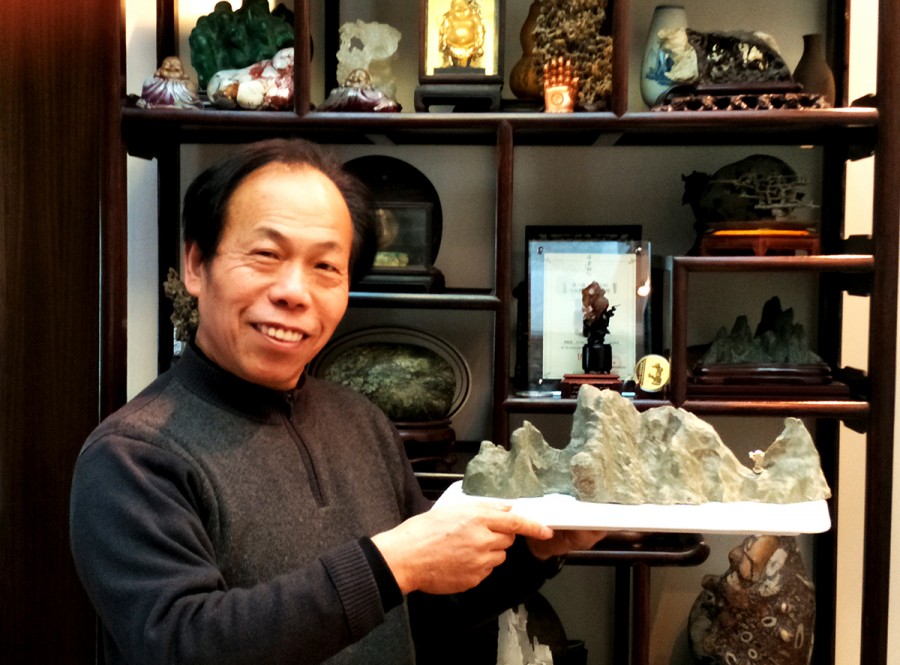





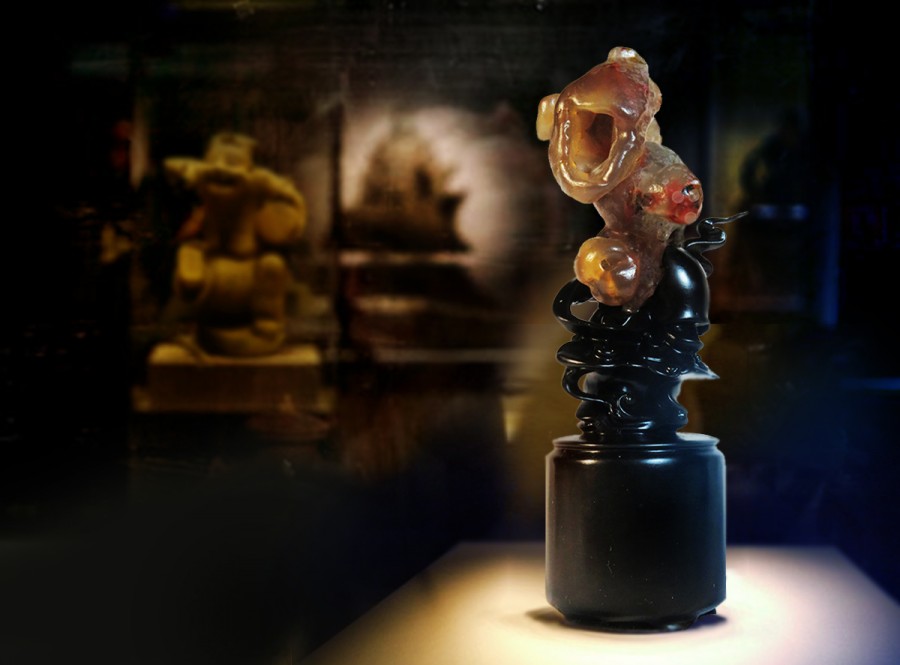

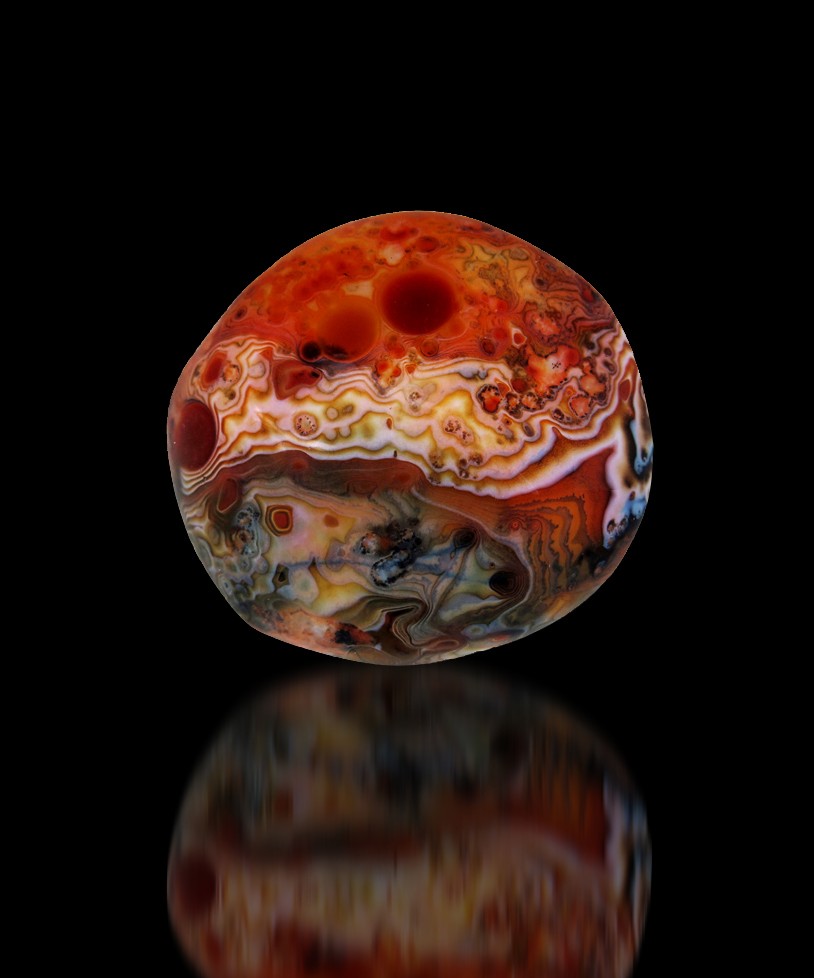

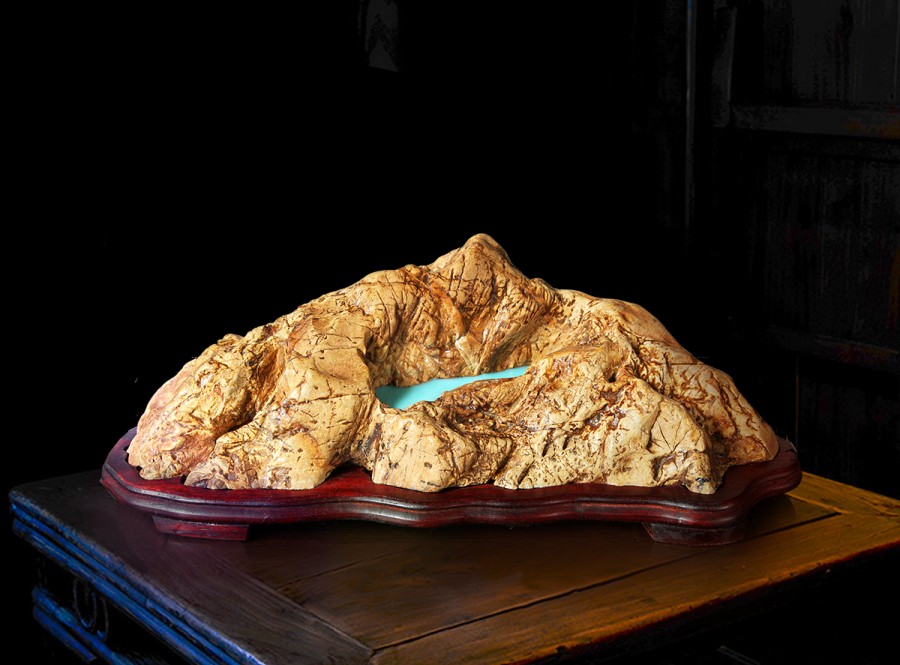



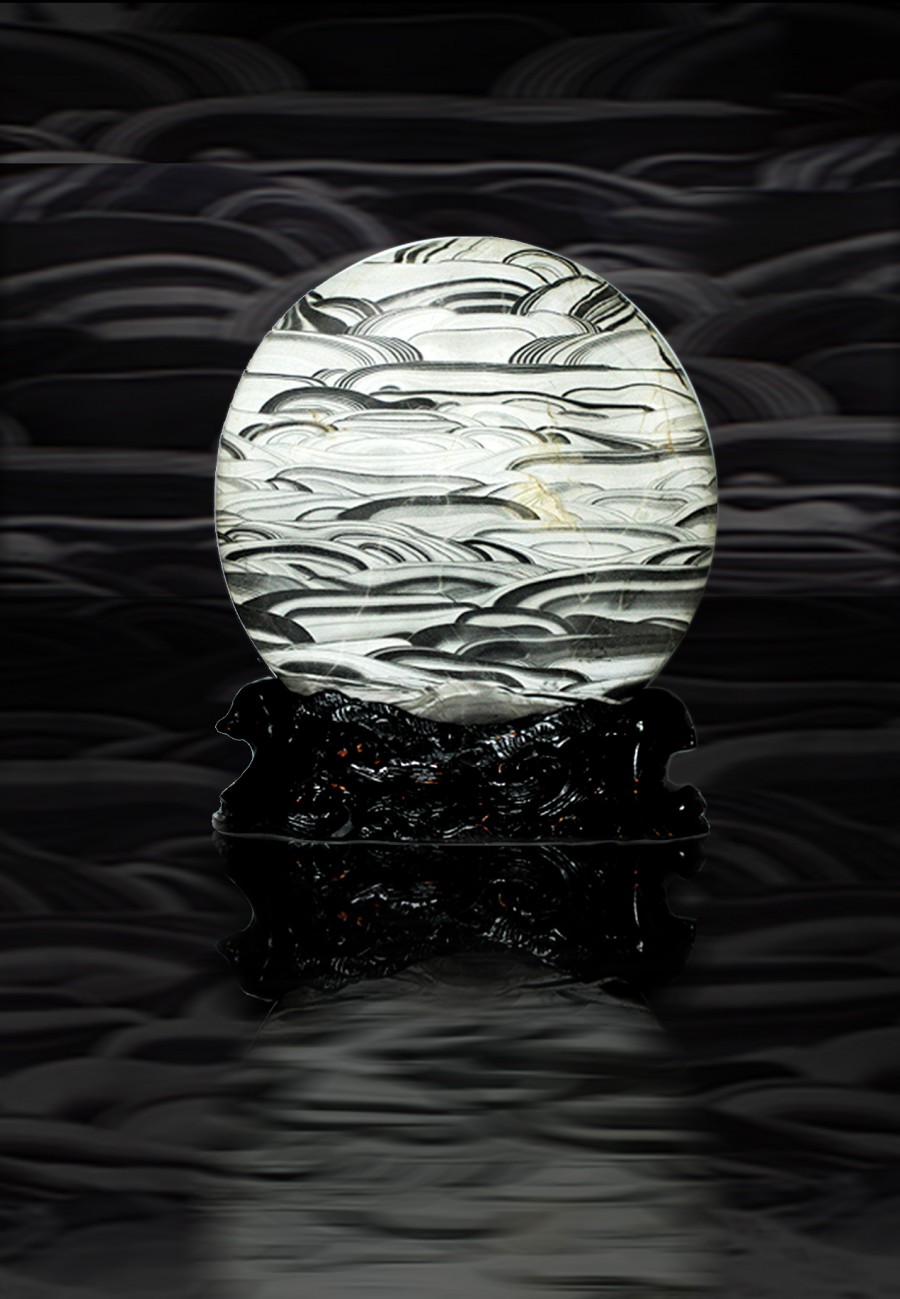


Comments